E-MOUNTAINBIKE Think Tank #04
The eMTB market has grown rapidly within a very short time – not only has the market changed, but new uses and challenges have also emerged. At the fourth E-MOUNTAINBIKE Think Tank, we invited industry experts to an innovation management workshop to discuss the dynamic developments in the eMTB market.

The latest E-MOUNTAINBIKE Think Tank focused on a workshop with leading industry representatives and industry insiders on innovation management, under the direction of Dr Georg Stampfl. As a lecturer and former CEO, he combines many years of experience in this field with his passion, eMTBing. In his opening lecture, Dr Stampfl introduced the participants to the topic and explained the most important trends and findings from research and practice using vivid examples. It was interesting to note that “innovations” of successful example cases went well beyond product development, and that business models play a decisive role. Most participants also agreed that a lot of innovations and product developments in the bike industry are driven by engineers instead of being oriented towards real market needs; the question being asked is, “can we do this?” instead of “should we do it?” Dr Georg Stampfl sees precisely this lack of proximity to real market needs as the most pressing reason for the failure of start-ups and new developments.
The Workshop: You had ONE job!
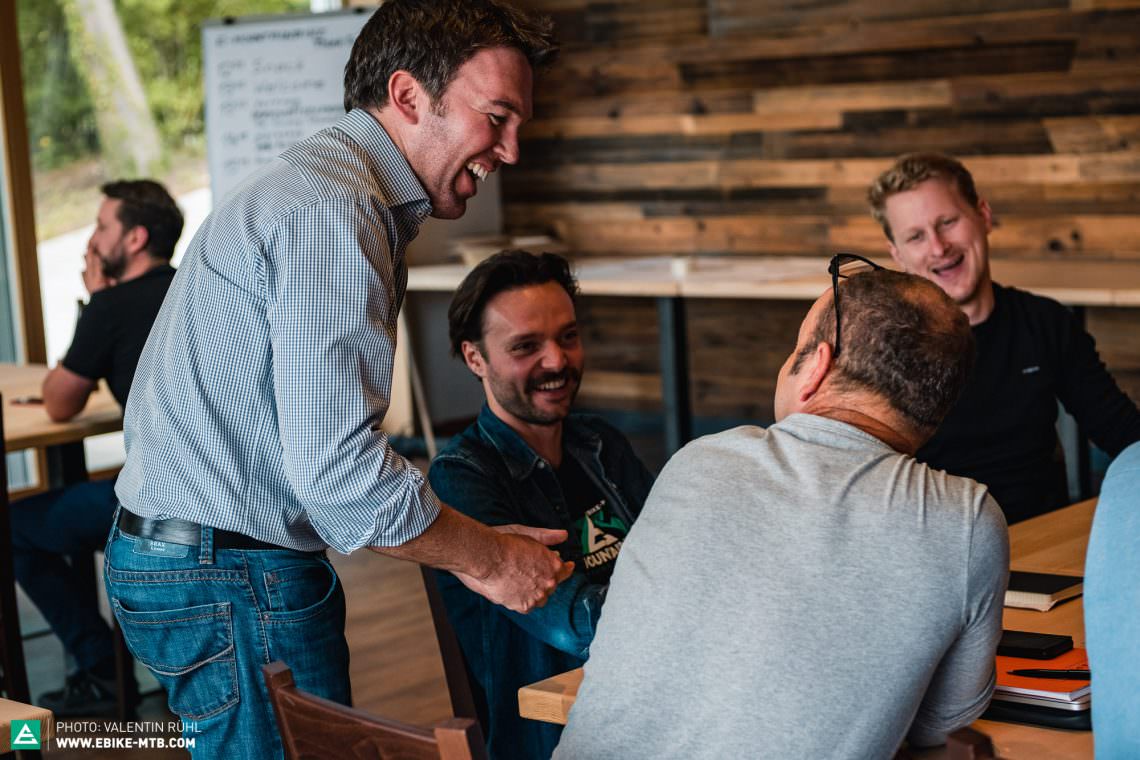
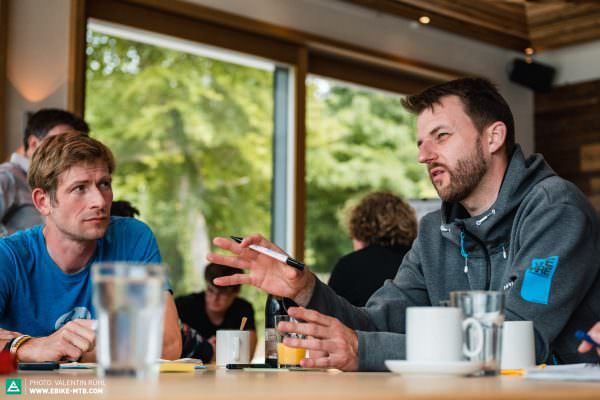
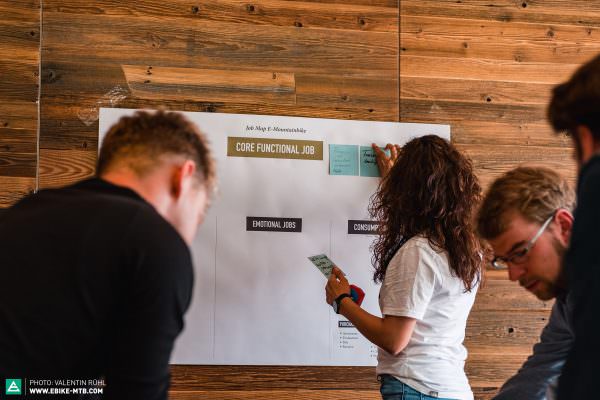
The workshop that followed, therefore, wasn‘t about the eMTB target group, but about the different expectations of eMTBers, i.e. about the jobs the product needs to fulfil. During the Job-to-be-Done-Workshop the participants evaluated the core functional jobs, related jobs, emotional jobs and consumption chain jobs that eMTBing fulfils. It may sound somewhat complicated, but in the course of the workshop, the topic became much more tangible. The definition of these jobs filled the afternoon of the first day and provided for exciting dialogue. New challenges, new developments – a change of perspective is called for. In the end, the jobs were divided into four different categories and prioritised on so-called task maps.
eMTB ride

During an eMTB ride, the participants had the opportunity to reflect on the topics of the workshop and to share their experiences with each other. The bravest amongst them went for a swim in the cold Wörthsee. The first day was rounded off with a BBQ, the relaxed campfire atmosphere with live music provided the perfect setting for networking.


Workshop Deliverables
On the morning of the second day, the task maps of the individual groups were combined into a joint task map. Then we analysed which jobs have already been fulfilled, which have been over-delivered and which remain unfulfilled. The tasks were arranged according to two dimensions – importance for the customer and satisfaction with the status quo, enabling us to prioritise tasks and identify those tasks that are important to the customer but not yet satisfactorily completed. The findings can be summarised as follows:
Core jobs fulfilled
eMTBs fulfil very different roles for different users. No matter whether they are used as a means of transport, as a toy or to improve health – eMTBs have grown up and already fulfil the central tasks very well. Initial troubles such as inappropriate componentry or lousy geometry have been largely eliminated, and the eMTB as a product is much more mature than it was just a few years ago.
eMTBs make cycling accessible to a broader group and are now also accepted by competitive riders. eMTBing is all about having fun. Having a good time with other riders is the main thing, as eMTBs compensate for differences in fitness. They also serve as lift substitutes and enable riders to enjoy themselves thoroughly, even within a limited time frame.

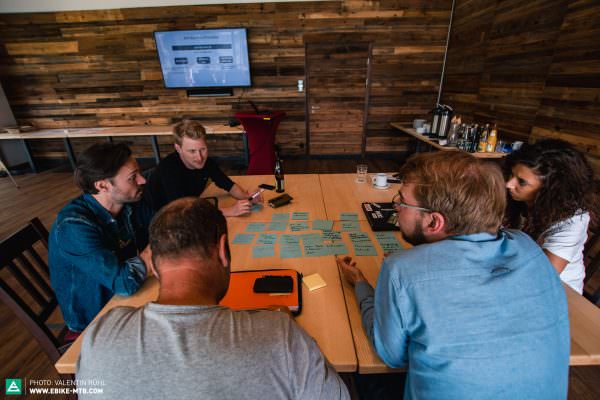
Emotional jobs play an important role
Also on an emotional level, the eMTB fulfils an important task. For some, eMTBing is the new golf, for others, it’s about the fascination with technology. The eMTB is already considered a strong status symbol – for many, it’s the most expensive product in the household (if the car is leased) – and can serve self-marketing purposes. However, the broad user base can also be a challenge for the communication of manufacturers and media, because no product covers all needs equally.
Great potential for improvement in the consumption chain
While eMTBs fulfil the core jobs very well, the challenges lie in the area of the consumption chain instead. For many customers, potential inhibitions arise even before the purchase. The cost of modern eMTBs scares off many first time buyers, and although alternative financing and business models are on the upswing, there currently aren’t enough possibilities. The ebike market is very young, dynamic and continuously changing. Many customers are overwhelmed by choice. This uncertainty can only be taken away in part with reviews and purchasing advice; longer model cycles and a more straightforward model policy on the part of manufacturers would be welcomed by many. A look at other industries shows that business models can be much more radical and that the bike industry always uses very similar models. Together with the participants, we developed various ideas on site.
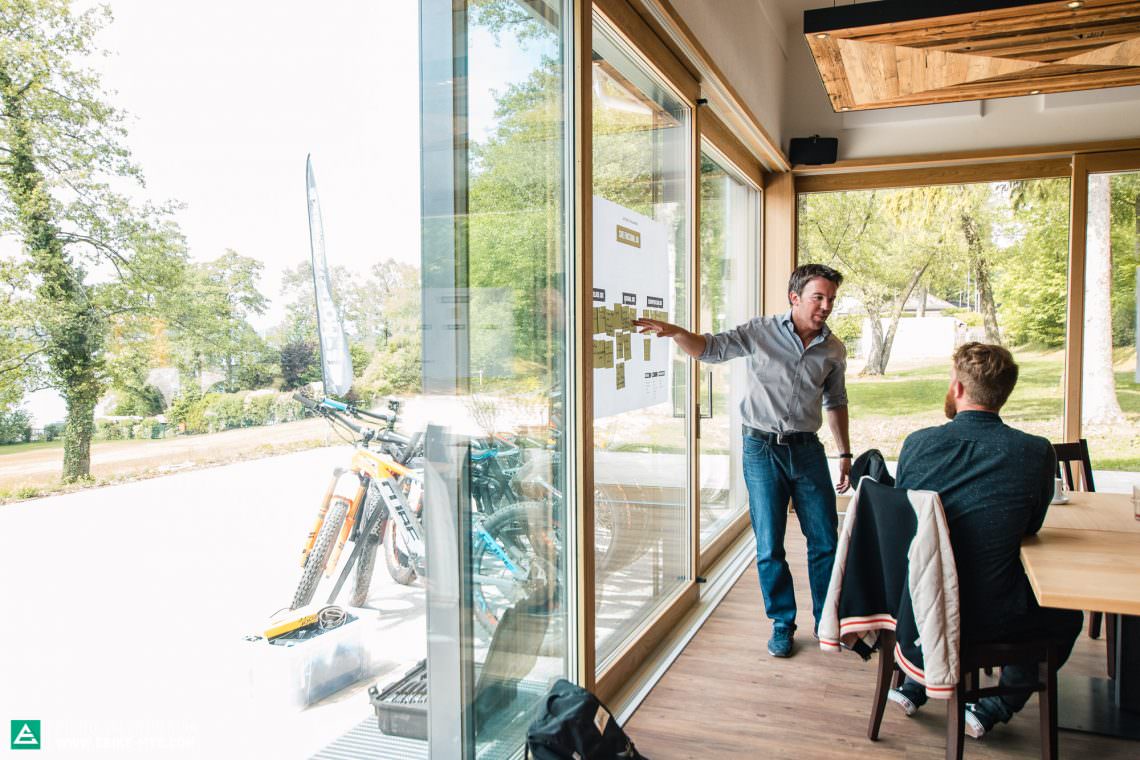
Lack of availability is another problem. Non-compliance with promised delivery dates annoys many buyers who regularly contact our editorial team. And there is room for improvement for the after-sales service. Lots of customers aren’t aware of maintenance intervals and follow-up costs, good offers for corresponding services are still in short supply. Maintenance also plays an important role when it comes to resale and value retention because used bikes can only be sold if they’re still in good condition.
Visions for the future
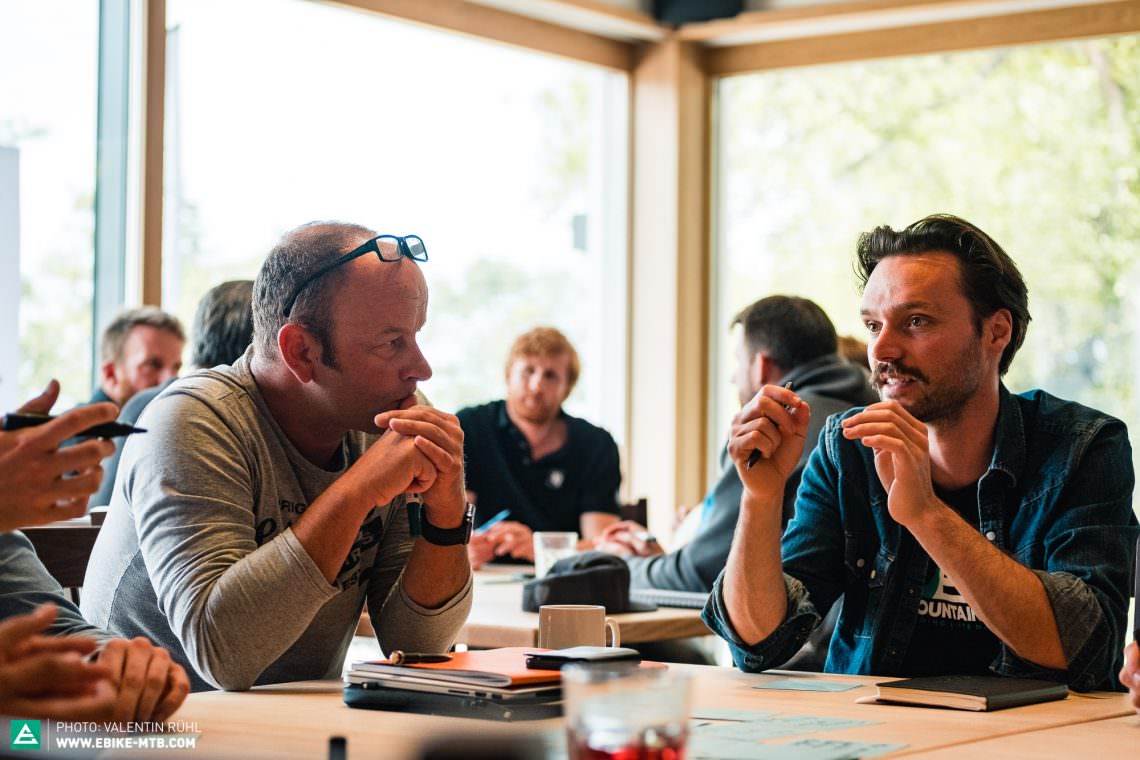
The workshop also discussed possible solutions to current problems. Service flat-rates and leasing offers appear particularly promising. Instead of buying an eMTB, dealers could offer leasing packages that include maintenance, rental bikes and a mobility guarantee. The Think Tank participants also see great potential in the field of digitisation, the connectivity of ebikes is still in its infancy.
Open discussion
At the end of the event, some open topics were discussed, which the participants could voice themselves. Tuning is still a danger for the sport, but changing the pedelec norm accordingly with appropriate anti-tuning measures is a step in the right direction. Rules for eMTB races and trail etiquette are closely linked to the tuning topic; the participants had the opportunity to discuss these topics openly. The interest in eMTB races is still low among end users, also at the latest race in Riva, many of the participants were representatives from the industry or sponsored riders. Also, the exclusion of some motors and bike brands in the race regulations provided plenty of discussion fodder, making clear that the topic of eMTB racing still has a long way to go.
Outlook: E-MOUNTAINBIKE Think Thank UK
As an internationally oriented magazine, we also see it as our task to help shape the international market. The next E-MOUNTAINBIKE Think Thank will take place in the UK to offer the industry representatives there a platform to exchange experiences and networks and to share experiences from German-speaking countries.
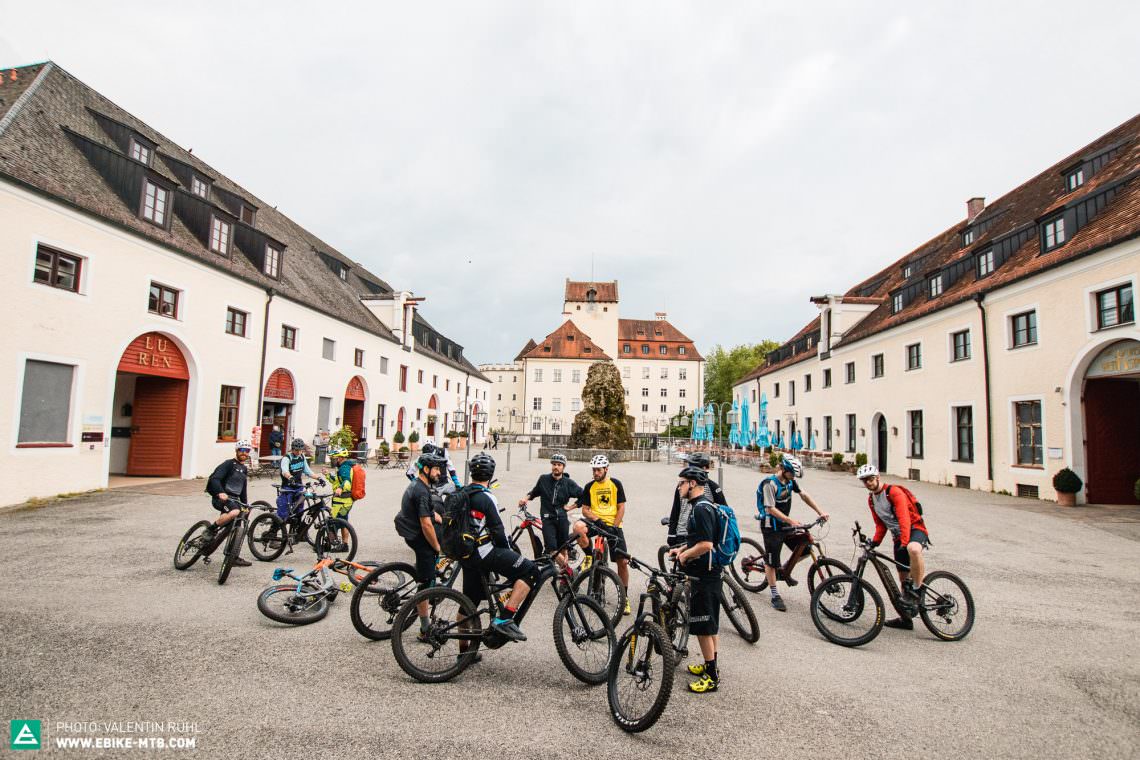
Did you enjoy this article? If so, we would be stoked if you decide to support us with a monthly contribution. By becoming a supporter of E-MOUNTAINBIKE, you will help secure a sustainable future for high-quality cycling journalism. Click here to learn more.
Words: Photos: Valentin Rühl








